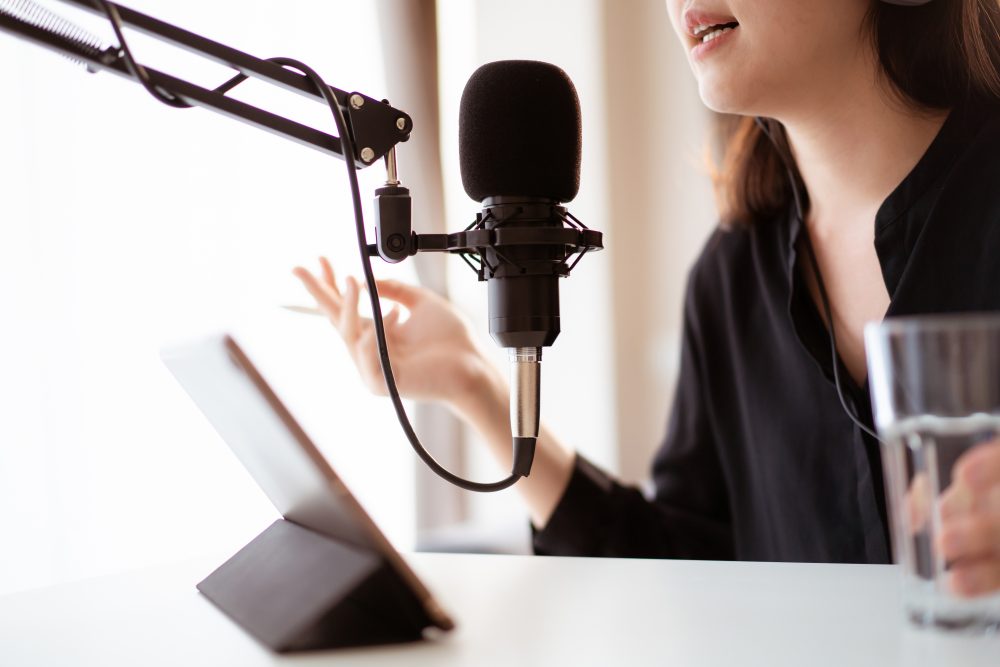Biotech brands are using science to create better-for-you foods without forgoing flavor.
The Power of Sound
From the dawn of the radio, the compelling power of audio has been recognized. Thanks to technological innovations that seamlessly empower people to create podcasts, instantly translate speech to text, and build online communities via social media, it’s easier than ever to harness audio. And with a global pandemic starving people of human interaction, a growing desire for connection and closeness is on the rise. In fact, according to “The Spoken Word Audio Report” from Edison Research and NPR, more than half (52%) of people 18–34 and 58% of people 35-54 agree that spoken word audio is becoming a more important part of their lives. As of 2021, there are 22 million more people listening to spoken word audio compared to seven years ago.
As we inch closer to our next normal, people are reveling in sensory experiences that dimensionalize stories and provide relief – think of the many popular TikTok trends driven by viral sound clips and #ASMR TikTok which has 205B views. And with Snapchat’s partnership with NBCUniversal expanding their movie and TV sounds library, social audio is solidifying its place in online culture. Audio’s impact is encapsulated through our macrotrend Sense-thesized, where people are increasingly drawn to experiences that add or manipulate sensory elements to generate new perspectives or enhance feelings of wellbeing. The trend is embraced by values of exploration, curiosity, ingenuity, and sensation. Heading into 2022, audio is finding new spaces to influence and foster connections in our modern world. People are leaning into audio in the realms of online communities and dating. Read on to learn more.
AUTEHNTIC CONNECTIONS
Following Clubhouse’s success, more brands are now chiming into the social audio market. While bigger players like Facebook focus their efforts on making audio content addictive via sharable “Soundbites” and live audio rooms, other lesser known brands are leaning into audio’s affinity for authentic and intimate connection to fuel new habits. Social audio startup Quilt is harnessing audio to extend online self-care communities. The wellness-focused app has three categories of rooms: spiritual and personal development, career and purpose, and relationships, sex, and family. Anyone can start a room for conversation and/or people can explore the app’s calendar to join discussions of interest. People who choose to be the room moderator will welcome listeners individually to encourage participation, promoting inclusive etiquette. And the app’s design is fostering meaningful experiences. In just the first month of its release in February, the company noted 80% of sign-ups coming back for conversations every week. They also saw around 60% of conversations starting spontaneously, rather than being planned and promoted. Quilt founder Ashley Sumner sees this positively as she hopes people can find a healthy use for the app such as waking up and “listening to daily affirmations, or setting an intention with a room of 10 people” instead of doom scrolling. This vision sets a new optimistic standard for our digitally charged social lives.
DIGITAL INTIMACY
Dating in the modern era is often met with a plethora of online apps and sites that feel grossly systematic and dull. Swiping on profiles based on pictures and prompts have left many desensitized to the real experience of getting to know a person. Audio-first dating app, Heart to Heart is bringing intentionality and intimacy back into the courting process. CEO Joshua Ogundu believes leading with a voice mechanism helps people be more considerate in their messages, compared to typing them. Thus, he believes it leads to more intentional actions around striking up conversations. In October, the company secured $750K in funding to bring the project to life and release a product by the end of the year. While the app is being developed, bigger dating app players are already capitalizing on the audio craze. Match Group’s Hinge added audio recording features to their UX just days after Heart to Hearts funding news. Users are now able to have audio recorded responses to prompts and send audio messages to their matches – although it’s important to note that the latter has been a feature on Bumble since the pandemic. Interactive media experiences that mix audio, video, image, and text features are undeniably captivating, and Hinge CEO Justin McLeod imagines empowering people with “the ability to tell a richer story about themselves on their profile.” The future of online dating is poised to explore all the senses people engage when meeting others, leaving the future curiously exciting.
SO WHAT?
Thanks to the global collective experience of the pandemic, people are primed to explore new modes of connecting, and audio formats are resonating due to their personable nature. Brands can explore ways to incorporate audio functions to create authentic touchpoints and deepen the experience. For example, a jewelry brand can create voice enabled reviews on their products. While beauty and resilience of the products will shine through photos and typed reviews, voice reviews can provide emotional draws to the memories created through the jewelry’s purchase or gift. Go a step further and consider ways to extend voice reviews to other platforms such as creating video ads that paint a picture of the review to complete the multimedia experience.




